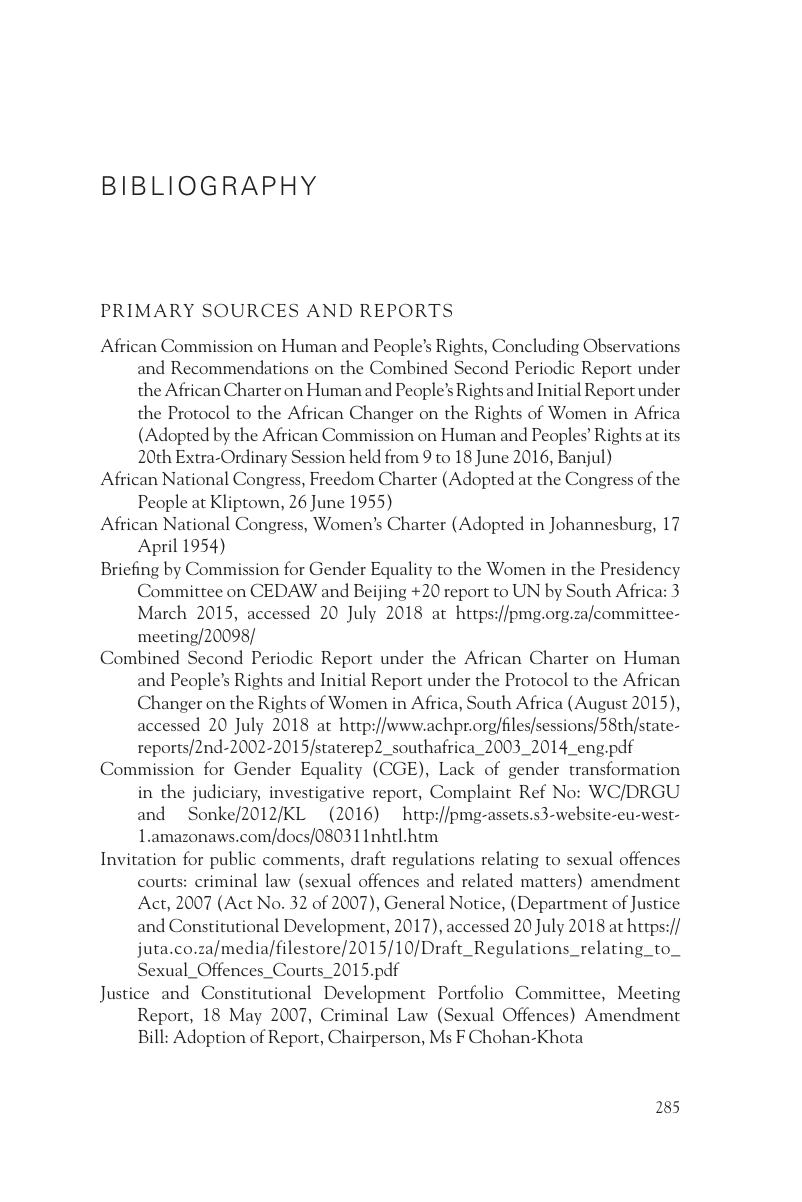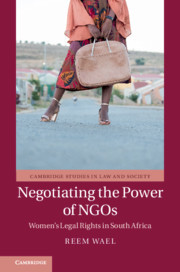Book contents
- Negotiating the Power of NGOs
- Cambridge Studies in Law and Society
- Negotiating the Power of NGOs
- Copyright page
- Contents
- Acknowledgements
- Table of Cases
- Primary Sources: South African, International, Regional and Global Law
- Abbreviations
- Chapter 1 Introduction
- Chapter 2 South Africa: Formal Law and the Constitution
- Chapter 3 Informal Justice: A Favourable Alternative?
- Chapter 4 From Politics to Law-making: NGOs and the State in South Africa
- Chapter 5 The Justice System: Space For Negotiating Human Rights
- Chapter 6 The Art of Litigation: Tactics and Impact
- Chapter 7 Access to Justice and NGOs: Awareness, Guidance and Empowerment
- Chapter 8 Disabling Factors for Socio-legal Development: Insights from Egypt
- Chapter 9 Conclusion
- Appendix Ethnographic Data
- Bibliography
- Index
- Cambridge Studies in Law and Society
- References
Bibliography
Published online by Cambridge University Press: 01 April 2019
- Negotiating the Power of NGOs
- Cambridge Studies in Law and Society
- Negotiating the Power of NGOs
- Copyright page
- Contents
- Acknowledgements
- Table of Cases
- Primary Sources: South African, International, Regional and Global Law
- Abbreviations
- Chapter 1 Introduction
- Chapter 2 South Africa: Formal Law and the Constitution
- Chapter 3 Informal Justice: A Favourable Alternative?
- Chapter 4 From Politics to Law-making: NGOs and the State in South Africa
- Chapter 5 The Justice System: Space For Negotiating Human Rights
- Chapter 6 The Art of Litigation: Tactics and Impact
- Chapter 7 Access to Justice and NGOs: Awareness, Guidance and Empowerment
- Chapter 8 Disabling Factors for Socio-legal Development: Insights from Egypt
- Chapter 9 Conclusion
- Appendix Ethnographic Data
- Bibliography
- Index
- Cambridge Studies in Law and Society
- References
Summary

- Type
- Chapter
- Information
- Negotiating the Power of NGOsWomen's Legal Rights in South Africa, pp. 285 - 330Publisher: Cambridge University PressPrint publication year: 2019



